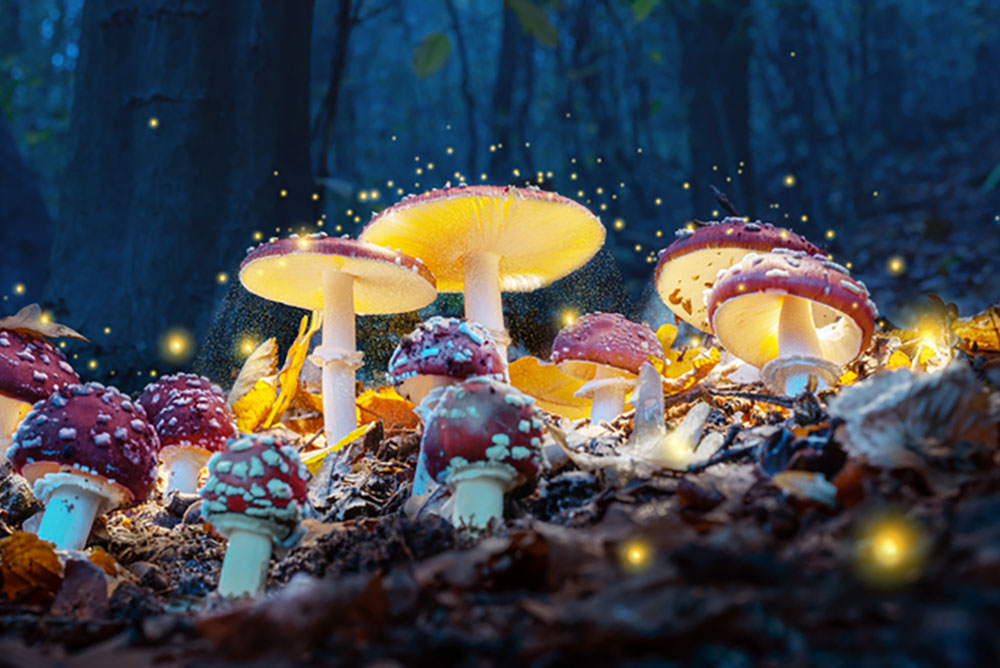
iStock
By Mary Carpenter
“OUT OF every 10 women I talk to, eight are microdosing [psilocybin],” a L.A.-based wellness entrepreneur told the Wall Street Journal earlier this month. Of six women featured in the piece, four rave about work-related boosts in mental clarity, creativity, engagement, brainstorming, and enthusiasm for repetitive tasks—while two emphasize relief of depression and social anxiety. Help with high-stress moments was the benefit for a 48-year-old tech executive, who said: “I am on my A-game, the way I felt when I was young, just rapid fire…I’m clear and I’m calm.”
“Performance enhancement” was the main motivation for microdosing listed by participants in a 2023 online survey, according to Birmingham, England researchers. “Improved mood, focus and creativity” were primary “beneficial outcomes,” though some reports included increased anxiety and physiological discomfort. And while many psychedelic microdosers report waning benefits after a few days, 13 participants in the intensive Birmingham research experienced lasting effects “because microdosing acted as a catalyst that encouraged healthy new behaviors.”
My one experience with small-dose psychedelic drugs involved neither work—making me unable to assess productivity or creativity—nor a measurable low dose. According to the New York Times, microdosing refers to “taking 5 to 10% of a full dose of a psychedelic, usually LSD or psilocybin, as a way of getting the supposed mental health benefits of the drug without the hallucinogenic high.”
On a misty vacation day in Lake Tahoe with two friends, sharing a broken Altoid containing LSD (a common preparation), I consumed what looked like a few crumbs. The result: I felt more energetic and had more fun walking around town and along the lake for hours, even as a lovely mist turned into pounding, if beautiful, rain. The drug produced a speedy, slightly nauseating effect that made me unsure how it would be to eat, but hot soup consumed around an outdoor fire pit tasted delicious.
One acquaintance of mine in her late 30s who recently moved to Miami has gone to several parties where low-dose psilocybin chocolates were on offer—though she felt too unfamiliar with the other guests to try them. In San Francisco, another gives afternoon “tea parties” without alcohol, explaining that his “psychedelic friends” don’t drink. In both reports, the doses involved were unknown; and the experiences unrelated to work.
But a good lawyer friend who lives in Europe can order “magic truffles” online from the Netherlands for the “usual” protocol, she said, of microdosing once every four days. While that regimen produced little effect, she experienced some “mood enhancement” on a different plan—taking the same well-measured microdoses four days in a row followed by a pause of three days—developed by mycology expert and author Paul Stamets. Founded by Stamets, Fungi Perfecti researches and markets a wide variety of mushrooms for medicinal uses, though not psilocybin.
The so-called Stamets protocol involves “stacking,” combining psilocybin with substances, such as Lion’s Mane mushrooms, chocolate and the B vitamin niacin that helps the body turn food into energy. According to Nature, the goal is “to accentuate salutary effects” by way of either complementary cognitive-enhancing qualities or potential biochemical interactions.
And Muse, a Denver-based “psilocybin company,” according to the Wall Street Journal, also recommends the four days on/three days off regimen. Muse sells psilocybin in chocolates and capsules, by referral only, and hosts “mushroom bars” at corporate events and birthday parties in L.A. But Muse does not use the word “psilocybin” in its marketing because the drug remains illegal in the U.S.—though several states and research centers have opened the way for legal use and experimentation.
Many aspects of the microdosing experience remain poorly understood, such as how the drugs work in the brain and why effects vary so widely among individuals. Also, there’s the question of what is the best dose and formulation for the desired effects—“sub-perceptual,” i.e., not altering perception of reality— for the two most popular microdosed drugs: psilocybin in about 80% of experiences and LSD in the rest.
Psychedelics primarily work on the chemical messenger serotonin that affects mood as well as cognition and memory. But the two largest placebo-controlled trials of microdosing—from London and the Netherlands—“suggest that the benefits people experience are from the placebo effect,” according to the New York Times. And a third, placebo-controlled trial on microdosing LSD at the University of Chicago also found no difference between the LSD and placebo groups.
“Acute creative enhancement” was the primary experience reported by microdosers in a 2023 review of 42 studies—while psychedelic macrodoses “tended to impair cognitive performance and creativity,” according to researchers in Victoria, British Columbia and at Johns Hopkins University. But inconsistencies plaguing the studies included dosage and intake protocols along with “set and setting”—which refers to the often-affecting preparation of participants for the psychedelic experience.
To date, I have taken psychedelic drugs only with a few most-trusted close friends and family members—who have procured and determined safe amounts, and remained with me during the experience. Now that I have access to psilocybin-infused chocolates at reliably low doses, I am curious about how those might affect my writing work—spur me to new heights of energy, productivity and creativity—or instead send me outside for hours to walk in invigorating rain.
—Mary Carpenter regularly reports on topical subjects in health and medicine.
